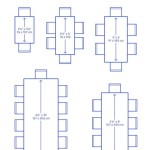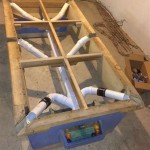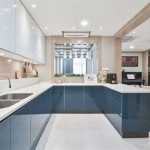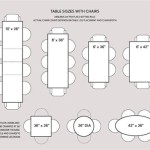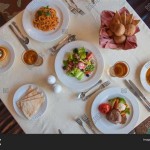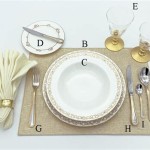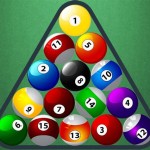World Market Dining Tables: A Comprehensive Overview
World Market offers a diverse selection of dining tables, catering to a wide range of aesthetic preferences and functional requirements. Understanding the range, materials, styles, and factors to consider when selecting a World Market dining table can assist consumers in making informed choices that enhance their dining space and lifestyle.
### Understanding the Variety of World Market Dining TablesThe dining table selection at World Market encompasses numerous styles, sizes, and materials. This broad assortment allows customers to find a table that complements their existing décor, accommodates their specific spatial requirements, and meets their budget. The assortment typically includes tables suited for smaller apartments and intimate dining areas, as well as larger tables designed for more expansive dining rooms and frequent entertaining.
A significant factor influencing the selection process is determining the appropriate size and shape. Round, square, rectangular, and oval tables are all commonly available. Round tables can foster a sense of intimacy and are well-suited for smaller spaces, while rectangular tables are ideal for larger groups and formal dining settings. Square tables offer a balanced aesthetic, and oval tables can provide a softer alternative to the rectangular shape.
Beyond shape and size, World Market provides dining tables crafted from various materials, including solid wood, engineered wood, metal, glass, and stone. The choice of material impacts the table's durability, maintenance requirements, and overall aesthetic appeal. Solid wood tables, for example, are known for their longevity and natural beauty, while glass tables can create a sense of spaciousness and modernity.
### Key Considerations When Choosing a World Market Dining TableSelecting the right dining table involves careful consideration of several factors. These include space constraints, style preferences, budget limitations, and the intended use of the table. A systematic approach to these considerations can ensure that the chosen table not only meets functional needs but also enhances the overall dining experience.
Firstly, assessing the available space is paramount. Measuring the dining area and accounting for surrounding furniture is critical to avoid overcrowding. It's advisable to allow at least 3 feet of space around the table for comfortable movement. Consider the placement of chairs and potential pathways to ensure that the table does not impede traffic flow.
Secondly, aligning the table's style with the overall décor of the room is crucial. World Market offers a range of styles, from rustic and farmhouse to modern and industrial. Selecting a table that complements the existing furniture, color palette, and architectural details will create a cohesive and visually appealing dining space. Observe the room's dominant style themes and select a table that accentuates, rather than clashes with, the established aesthetic.
Thirdly, establishing a budget beforehand is essential. Dining tables vary significantly in price, depending on the materials used, the size, and the complexity of the design. Before browsing the selection, defining a clear price range will help narrow down the options and prevent overspending. Remember to factor in the cost of chairs and any other accompanying accessories when calculating the total expense.
Fourthly, considering the intended use of the dining table will greatly influence the choice. If the table is primarily used for formal dining, a larger, more elegant table may be appropriate. If it is primarily used for everyday meals, a smaller, more durable table may be more suitable. Families with young children may opt for tables with stain-resistant surfaces and rounded edges for safety.
### Exploring Different Styles and MaterialsWorld Market's dining table collection is distinguished by its diverse range of styles and materials. Each style offers a unique aesthetic, while each material possesses distinctive properties that affect durability, maintenance, and overall appearance.
Rustic dining tables often feature reclaimed wood, distressed finishes, and visible wood grain, imparting a warm and inviting ambiance. These tables typically incorporate elements such as exposed knots and imperfections, adding to their character and charm. Rustic tables pair well with farmhouse-style chairs and natural textures.
Modern dining tables are characterized by clean lines, minimalist designs, and sleek surfaces. They often incorporate materials such as glass, metal, and engineered wood. Modern tables tend to be more streamlined and unfussy, making them suitable for contemporary dining spaces. They often feature neutral color palettes and geometric shapes.
Industrial dining tables combine elements of metal and wood, often featuring exposed hardware and raw finishes. These tables draw inspiration from factory aesthetics, imparting a sense of ruggedness and functionality. The juxtaposition of metal frames and wooden tops creates a visually striking contrast. This style pairs well with metal chairs and exposed brick walls.
Solid wood dining tables are prized for their durability, natural beauty, and timeless appeal. They can be crafted from various types of wood, each with its own unique grain pattern and color. Solid wood tables are generally more expensive than tables made from engineered wood, but they offer superior longevity and can be refinished over time. Common types of wood used in dining tables include oak, maple, walnut, and acacia.
Engineered wood dining tables, such as those made from MDF or plywood, offer a more affordable alternative to solid wood. These tables are made by bonding layers of wood together, creating a stable and durable surface. Engineered wood can be veneered with a thin layer of real wood to achieve the look of solid wood. Engineered wood tables are often easier to clean and maintain than solid wood tables.
Glass dining tables are known for their transparency and ability to create a sense of spaciousness. They can be either clear or tinted, and they often feature metal or wood frames. Glass tables are relatively easy to clean, but they can be susceptible to scratches and fingerprints. They are well-suited for smaller dining areas where maximizing light and space is a priority.
Metal dining tables are often used in industrial or modern settings. They are durable, easy to clean, and resistant to staining. Metal tables can be made from various metals, including steel, iron, and aluminum. They often feature powder-coated finishes to protect them from rust and corrosion. Metal tables pair well with metal chairs and minimalist décor.
Stone dining tables, especially those with marble or granite tops, exude elegance and sophistication. These tables are highly durable and resistant to heat and scratches. Stone tables require regular sealing to protect them from stains. They are a luxurious option for formal dining rooms.
### Maintaining and Caring for World Market Dining TablesProper maintenance and care are crucial for preserving the beauty and longevity of a World Market dining table. The specific care requirements vary depending on the material from which the table is made. Implementing a consistent cleaning routine and addressing spills promptly can prevent damage and ensure that the table remains in optimal condition.
For solid wood dining tables, regular dusting with a soft cloth is essential. Avoid using abrasive cleaners, as they can scratch the finish. Periodically applying a wood polish or conditioner can help to protect the wood and maintain its luster. Spills should be wiped up immediately to prevent staining. Avoid placing hot objects directly on the surface of the table, as this can damage the finish. Use coasters and placemats to protect the table from heat and moisture.
Engineered wood dining tables can typically be cleaned with a damp cloth and mild detergent. Avoid using excessive water, as this can damage the underlying layers of wood. Spills should be wiped up immediately. Avoid using abrasive cleaners or scouring pads, as they can scratch the veneer. Regularly check for any signs of damage, such as peeling veneer or swelling.
Glass dining tables can be cleaned with a glass cleaner and a soft cloth. Avoid using abrasive cleaners, as they can scratch the glass. Fingerprints and smudges can be easily removed with a damp cloth. Regularly check the hardware that connects the glass top to the frame to ensure that it is secure.
Metal dining tables can typically be cleaned with a damp cloth and mild detergent. Avoid using abrasive cleaners, as they can scratch the finish. Regularly check for any signs of rust or corrosion. Applying a protective coating of wax can help to prevent rust. Avoid placing heavy objects on the table that could potentially damage the frame.
Stone dining tables, such as those with marble or granite tops, require regular sealing to protect them from stains. Clean spills immediately to prevent staining. Use a mild dish soap and a soft cloth to clean the surface. Avoid using acidic cleaners, such as vinegar or lemon juice, as they can damage the stone. Use coasters and placemats to protect the table from scratches and heat.
By implementing these maintenance practices, consumers can ensure that their World Market dining tables remain in good condition for years to come, providing a stylish and functional centerpiece for their dining space.

Cynthia Vintage Walnut Turned Leg Dining Table World Market

Jozy Round Weathered Gray Wood Drop Leaf Dining Table World Market

Espresso Wood Tobias Dining Table World Market

Russo Extra Long Oval Fluted Wood Dining Table World Market

Dining World Market

Jenn Solid Acacia Wood Adjustable Height Dining Table World Market

Neve Oval Brushed Oatmeal Dining Table World Market

Rustic Dining Table Chairs For A Charming Room

Outdoor Dining Ideas Home Decor Tips Inspiration World Market

Avila Washed Natural Wood Extension Dining Table World Market

